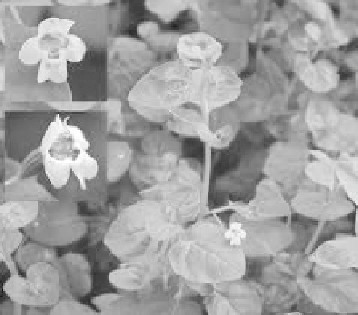Environmental Engineering Reference
In-Depth Information
bioactive compounds belonging to lavonoids, alkaloids, tannins, phenols,
saponins, phytosteroids, and glycosides. The bioactive compounds isolated
from this species include nuciferin, nornuciferin, nelumborosides A and B,
nelumstemine, dotriacontane, roemerin, liensinine, referine, lotusine, liri-
odenine, asimilobin, and pronuciferine. These compounds, apart from other
activities, have also shown inhibitory actions on the secretion, aggregation,
and suppression of platelets
in vitro
. The lavonoids of its leaf extract have
been reported to attenuate body lipid accumulation and prevent obesity. The
compound (S)-armepavine is a potential therapeutic agent for treating auto-
immune crescentic glomerulonephritis (AcGN). In traditional medicines, its
leaves are used for treating sunstroke, diarrhea, dysentery, fever, dizziness,
and blood vomiting. Its fruit decoction is used for treating fever, heart prob-
lems, and for blackening hair. The plant extract is also used as an antidote
for smallpox and for treating cholera, worm infection, and intermittent fever.
LINDERNIA ANAGOLLIS
(BURN. F.) PENNELL
Phylum: Magnoliophyta
Class: Magnoliopsida
Order: Scrophulariales
Family: Scrophulariaceae
Common name: Yellow vein virus
Distribution: Continental and Southeast Asia, Northern Australia
Habitat: Along rivers, marshes, rice ields
Description: It is an annual herb that can grow to a maximum height of 40 cm.
It is branched at the base. Branches are short, prostrate, or erect. Subsessile
leaves are oblong-lance shaped to ovate with a maximum length of 50 mm.
They are truncate at the base, with shallow dentate margins. Flowers are
axillary and solitary, with one per leaf pair. The petal tube is 10 mm long.
Its upper lip is entire and lower lip three lobed. The petal base is yellowish,
and petal lobes are bluish purple or white.
Compounds and activities: The extract of this species exhibited strong scaveng-
ing DPPH radical activity with an IC
50
value of 24 µg/ml (Shyur et al., 2005).

